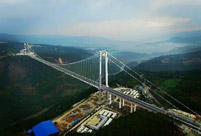

During his recent visit to Vietnam and Japan, U.S. President Barack Obama has been advocating the Asia-Pacific Rebalance strategy, drawing wide attention from the international community. Some western media even applaud this kind of strategy, claiming that the U.S. is capable of building stronger alliance ties with countries that are China’s concerns.
The Asia-Pacific Rebalance strategy is a top priority in the foreign policy of the Obama administration. From the content, the strategy includes three aspects, which were thoroughly highlighted in Obama’s trip this time.
First of all, is the increased military presence of the U.S. in the Asia-Pacific region and its strengthened engagement in regional security affairs. During Obama’s visit to Vietnam, both sides issued a joint statement, pledging to step up cooperation in security, defense, and other areas.
The U.S. government has fully lifted its embargo on sales of lethal arms to Vietnam, and promised to help improve Vietnam’s maritime ability. The “Return of U.S. Forces to Cam Ranh Bay” is among the key topics of discussion between the U.S. and Vietnam.
Secondly, is the seeking of influence and control over economic order in the Asia-Pacific region. The Tran-Pacific Partnership (TPP), with Vietnam and Japan on board, has become a crucial stepping point for the U.S. Obama administration which has raved about the benefits that the TPP will bring to economic growth and the boosting of employment in Vietnam and has vowed to offer technical support as well as capability-building assistance to the Southeast Asian country, in a bid to persuade the Vietnamese side to approve and fully carry out this so-called “high-standard” agreement as soon as possible.
Thirdly, is the promotion in the regards of communication and coordination abilities between the U.S. and Asia-Pacific countries. The U.S. is committed to consolidate alliance ties with Japan and other traditional allies. Per the request of Japan, Obama visited Hiroshima, making him the first active U.S. president to do so. Such a move is clearly intended to bring closer together the U.S.-Japan alliance.
In the meantime, the U.S. is also developing partnerships with regional countries in order to build a relationship network. The U.S. and Vietnam have made it clear that the two countries will strengthen political and diplomatic bonds and intends to launch “2+2” meetings between both Foreign Ministers and Defense Ministers, so as to further enrich the “comprehensive partnership”.
Obama’s trip to Japan and Vietnam this time is obviously centered on the Asia-Pacific strategy with multiple agendas. Through clearly intending to restrain China, the U.S. may not get what it wishes for.
In terms of military deployment, more frequent military presence of U.S. troops, especially its reckless behavior in the South China Sea, has triggered tension and concerns among regional countries.
As for economic cooperation, several media have pointed out that the implementation of the TPP could let more Vietnam-made commodities, such as shoes, flood into the U.S. market, which will bring about concerns from domestic interest groups and cause dissatisfaction within the government.
On the other hand, TPP membership will not convince Vietnam to relinquish other options. In fact, Vietnam has joined the Regional Comprehensive Economic Partnership (RCEP) as well as the China-led Asian Infrastructure Investment Bank (AIIB).
Obama’s visit to Hiroshima has also drawn controversy from U.S. allies, for example, South Korea. Due to its diverse foreign policies, Vietnam will not easily choose sides between major countries, let alone be tied to the U.S. “chariot”.
The Asia-Pacific Rebalance strategy has been through a “rough ride”. The reason for this is that the strategy is ultimately based on the exclusiveness of America’s own interests, instead of inclusiveness. It goes against the trend of in-depth development of economic globalization and the epoch tide of peace and development. Unjust and with little support, how can such a strategy be realized?
(The author is the Deputy Director of the Department for International and Strategic Studies at the China Institute of International Studies.)
This article was edited and translated from 美“亚太再平衡”战略失道寡助(望海楼)Source: People's Daily
 French girl ties the knot with Chinese boy
French girl ties the knot with Chinese boy Beijing Style: ready for bare legs
Beijing Style: ready for bare legs Century-old station sees railyway evolution
Century-old station sees railyway evolution Enthusiasts perform Kung Fu at Wudang Mountain
Enthusiasts perform Kung Fu at Wudang Mountain Stunning photos of China's fighter jets in drill
Stunning photos of China's fighter jets in drill Monk's mummified body to be made into a gold Buddha statue
Monk's mummified body to be made into a gold Buddha statue Former Chinese solider of the French Foreign Legion seeks wife online
Former Chinese solider of the French Foreign Legion seeks wife online Asia's longest and highest suspension bridge to open to traffic
Asia's longest and highest suspension bridge to open to traffic China's first interactive robot looks like a beauty
China's first interactive robot looks like a beauty Top 20 hottest women in the world in 2014
Top 20 hottest women in the world in 2014 Top 10 hardest languages to learn
Top 10 hardest languages to learn 10 Chinese female stars with most beautiful faces
10 Chinese female stars with most beautiful faces China’s Top 10 Unique Bridges, Highways and Roads
China’s Top 10 Unique Bridges, Highways and Roads Can US win a new Cold War upon China?
Can US win a new Cold War upon China? China sitting on data goldmine
China sitting on data goldmine Experts say Sino-US space collaboration is likely to stay sci-fi
Experts say Sino-US space collaboration is likely to stay sci-fi Chinese NGOs receive less from overseas backers as new law stresses national security
Chinese NGOs receive less from overseas backers as new law stresses national securityDay|Week